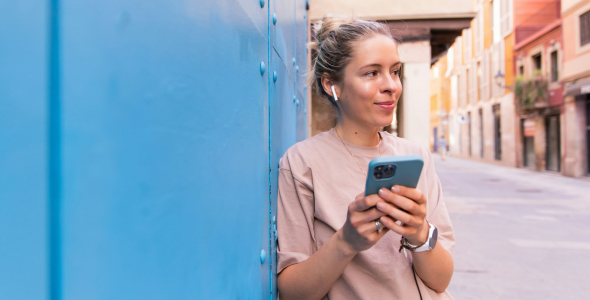Usability testing questions: your user testing FAQ
Become a better facilitator, ask the right usability testing questions, and gain deeper insights with our user testing FAQ.
What is usability testing?
Usability testing is a means of testing how end users interact with your new or existing digital products and services.
It usually starts with a detailed review of your web analytics to get an initial idea of what your users are doing on your digital product or service, helping to identify potential areas of friction.
Once you’ve identified what you want to test, and the kind of information you want to uncover, the next stage in the user testing process is to recruit real or potential customers for face-to-face or remote interviews.
User testing interviews are designed to identify why customers interact with your product or prototype in a certain way, with the aid of an experienced facilitator to elicit focused and unbiased responses.
Here at Inviqa we encourage our clients to join us for live viewing of our usability testing, either via video conferencing tools (Google Hangout or Zoom), or by directly observing from another room in our office, next to our purpose-built lab. The user’s face and the website or app they’re using is visible on a monitor and observers are able to see and hear them talking to the consultant.
Observation is important for aligning and engaging stakeholders, providing first-hand customer insight, and helping teams better understand effective UX methodologies as part of their digital capability building.
You can then review all findings and issues uncovered during the research, identifying prioritised recommendations, together with an action plan for implementing changes.
What are the benefits of usability testing?
Usability testing provides detailed, evidence-based insight into how and where you can improve your site or app to provide a superior customer experience, enabling you to constantly revisit and refine the digital customer experience.
Where you’re looking to launch a new product or service, user testing enables you to learn how your target users would interact with your proposed product. And then make changes while there’s still time, based on the improvement opportunities you uncover.
The insights you drive out during your user testing can be relevant across multiple customer touchpoints and areas of the business, from optimising user journeys and digital product features, to influencing the organisation’s strategic direction.
No matter how robust and high-performing you think your digital service may be, usability testing will always identify areas to drive improvements as part of your ongoing customer experience optimisation.
Remember though that recruiting the right people, and facilitating the session in the right way, is key to getting honest user feedback and the insights you’re looking for.
How do you recruit the right research participants?
As with any piece of research, the results you’ll get from you user testing will only be as good as the users you test, so it’s key to get the right participants.
It’s usually best to use an experienced recruiter for recruiting research participants, which will make things faster, simpler, and more cost-effective than managing the user research recruitment process in-house.
Another key benefit of using a third party to conduct and facilitate your usability testing is that research participants are more likely to give honest feedback since they feel they’re speaking to an impartial audience.
There are, however, some situations where doing your own recruitment makes sense.
Check-out our blog post on user research recruitment to get our top tips.
How should you prepare for usability testing?
To get the best results from your usability testing, you’ll want your research participants to relax and behave naturally when using your digital product or prototype, so consider how you can put them at ease – things like:
- Making sure they understand how to get to the testing location
- Clearly setting expectations around what they’ll be doing and how long it will take
- Providing refreshments
- Avoiding the use of jargon
- Reassuring them that there is no right or wrong answer, and whatever they say will only be used for the purposes of the research
Observing user research is a team effort and our analysis will be better with your help.
Here are a few things to bear in mind when observing the sessions:
- People are different and so are the interviews. We are looking for patterns across the day, not the reaction of a single participant. Sit tight and enjoy the ride before making conclusions.
- The discussion guide is just a guide, and the facilitator will follow up on interesting topics and adapt during the session, rather than following the guide verbatim.
- We aren’t testing the user. Please be respectful of the participants who are giving up their time to come to the sessions, whatever their attitudes!
- Try and keep chat to a minimum. Our observing consultant in the room will be thoroughly making notes, and so needs to clearly hear the interview, so we’d appreciate keeping non-interview related chats to a minimum!
What should be tested during usability testing?
Start by giving your user research participant some background on the digital product or digital prototype they’ll be testing. Invite some initial thoughts around their expectations for a product or service of this nature.
Be sure to take notes to show that you welcome and value feedback of any kind. Where you’re working with a prototype, clarify this with the user and explain where things might not be fully functional.
Then give your participant a device displaying the product or prototype they’re testing. Gauge initial impressions and invite them to spend some time navigating around and getting familiar with the product, verbalising any first thoughts.
Now ask your participant to complete some key tasks that are critical to your research goals and the product’s success (for an ecommerce site, for example, this could be purchasing a product).
Where people struggle to complete a task, try to avoid steering them too early, because you’ll get more valuable information if you let them explore naturally.
At the end of the session, your facilitator will come into the observation room and ask if there are any additional questions you have for the participant. This is a last opportunity to glean overall impressions of the product or prototype, and to gauge whether expectations have been met.
What’s the best way to extract the information you need?
The best interviews happen when a moderator is less visible and acts more of a fly on the wall.
Give participants plenty of time to complete tasks naturally, and one at a time. When needed, provide gentle direction to help extract the type of information you need, through prompts such as:
- ‘Talk me through what you see’
- ‘What do you understand this to mean?’
- ‘What would you expect to see when clicking here?’
- ‘What are your immediate thoughts?’
- ‘Can you give an example?’
Another good approach is to ask the user to suggest some tasks to complete using the product or prototype. It’s a useful way to gain insight into their expectations and needs, and the types of features and functionality that matters to them most.
Remind your participants that you’re testing the product, not themselves, by formulating tasks as scenarios, rather than instructions, for example:
- DO say: ‘Imagine that your boiler has broken and you need to ring the company urgently. How would you find the right number to ring?’
- DON’T say: ‘Now go to the “contact us” section of the website’
How do you elicit honest feedback?
If you think your research participant is just saying what you want to hear, try these tips for extracting honest answers:
- Relax them and remind them you’re looking for all feedback, positive and negative
- Avoid providing clues or directions
- Only give neutral feedback and reactions
- Remind participants to think aloud when carrying out tasks
- Only chip in to help a participant provide feedback, clarify a response, or focus them back on a task if what they’re talking about isn’t relevant
- Use phrases like ‘show me how’ to focus them on completing a task
- Pay attention to what their behaviours show, rather than just recording what they say
- Ask them to share real-life examples and experiences where relevant, for example: ‘Can you give an example of another service you use that does this well and explain why you chose that example?’
- Where a participant isn’t forthcoming or descriptive, try prompts like ‘How does that make you feel?’, ‘Why do you feel that way?’, ‘Can you be more specific?’, ‘So are you suggesting?’
How should you capture user testing findings?
Take note of key findings on sticky notes. Then, at the end of each session, collate these on a wall or whiteboard to identify the most important findings for each task.
Remember that:
- A good observation is specific, can be understood on its own (when linked to the step in the interview), and is identifiable.
- Notes should be easy for others to understand. Use a thick marker pen so that it’s easy to read photographed sticky notes.
- You don’t need to be too comprehensive. One of your consultants will take detailed notes on each session, so focus instead on key findings.
- Attaching time stamps to key observations can be really useful when conducting your analysis.
How do you analyse usability testing findings?
It’s great to start grouping your sticky notes as soon as possible after usability testing is completed, so that you can quickly start identifying common patterns from feedback across all interviews whilst the information is fresh.
Be sure to group common findings together, and give priority to the issues you uncover. Be mindful of your research objectives and focus on the evidence that will help you achieve those goals (not everything you’ve noted will be relevant to your research goals). Use this information as the basis of your reporting.
Wrapping up
You can’t control everything when it comes to usability testing, but you can strive to be a better research facilitator.
This, in turn, helps ensure the validity and quality of your insights – and we hope this user testing FAQ helps you achieve this!
Usability testing is crucial for helping you to continually optimise the customer experience, so demonstrate its value to the wider business; invite key stakeholders to observe sessions and get involved.
Talk to us today about how to optimise your usability testing for better human and business outcomes.





